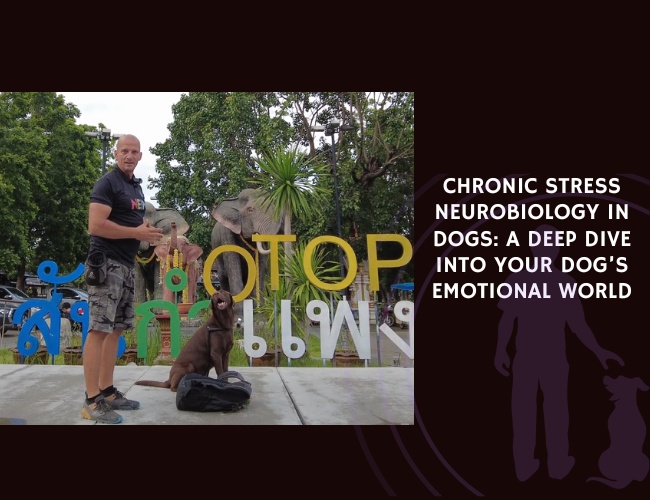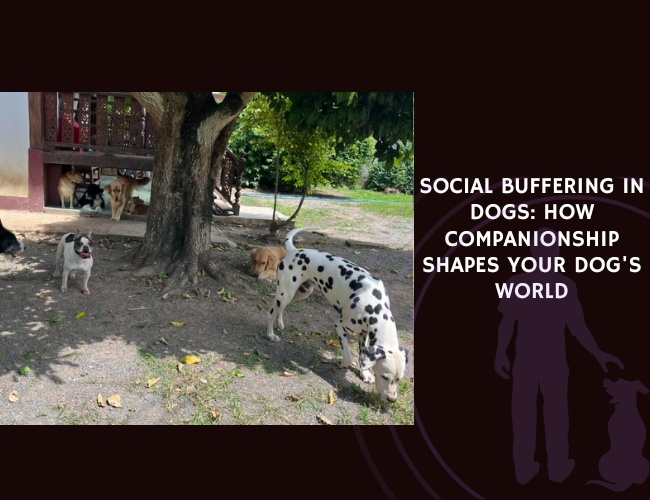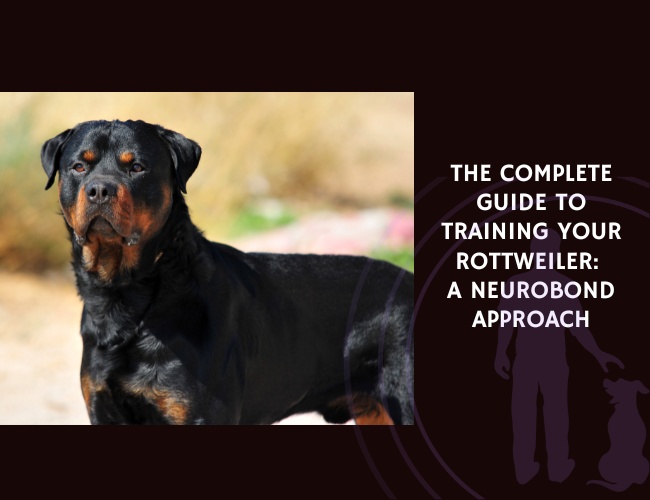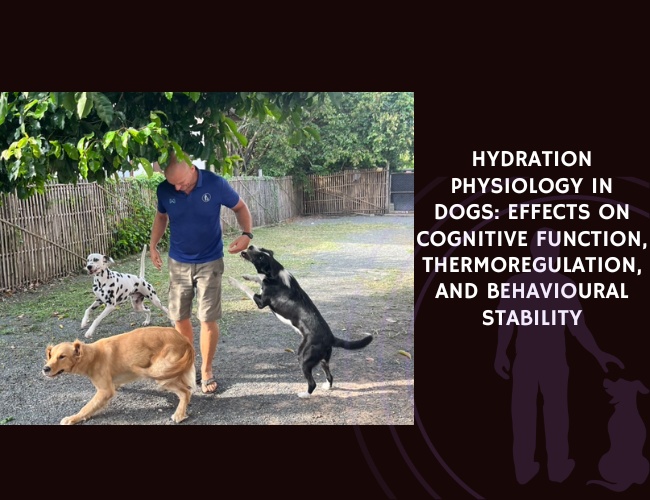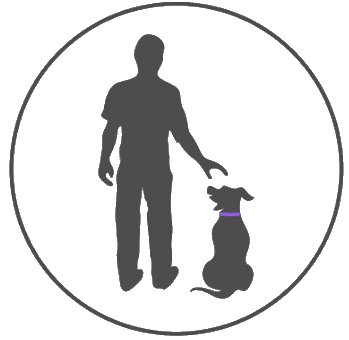Understanding Canine Social Flexibility
Dogs’ Natural Ability to Adapt to Different Social Environments
Dogs have an innate ability to adapt to a variety of social environments. This flexibility is evident in their capacity to fit in with different human households, as well as their interactions with other animals. Unlike many animals that display limited social plasticity, dogs can modify their behavior to align with the social dynamics of their environment. This adaptability is not merely behavioral camouflage but a learned integration process where dogs genuinely understand and respond to social cues.
The adaptive nature of dogs is reflected in their ability to follow human commands, exhibit empathy, and even conform to social routines established within a household. Social parameters can vary significantly from one household to another, yet dogs demonstrate remarkable capabilities to understand and adjust to these variations. These behaviors underscore the deep-seated social intelligence in dogs which allows them to thrive in diverse social settings.
Why Are Dogs Such Social Creatures?
Dogs are renowned for their social nature, a trait that has been honed through centuries of evolution and domestication. This social inclination is deeply rooted in their ancestry, as dogs descended from wolves, which are inherently pack animals. Living in packs required cooperation, communication, and social bonds to ensure survival, traits that have been passed down to modern dogs. As a result, dogs have developed an exceptional ability to read social cues, both from humans and other animals, allowing them to navigate complex social environments with ease.
The domestication process further enhanced dogs’ social capabilities. Early humans selected for traits that favored sociability and cooperation, leading to the development of breeds that were not only skilled at working alongside humans but also adept at forming strong emotional connections. This selection process has resulted in dogs that are highly attuned to human emotions and capable of forming deep bonds with their human companions. Their ability to understand and respond to human gestures, expressions, and vocal tones makes them unique among domesticated animals, reinforcing their status as beloved social creatures.
Moreover, dogs’ social nature is supported by their cognitive abilities, which allow them to learn and adapt to various social settings. They possess a remarkable capacity for social learning, enabling them to observe and mimic behaviors that are rewarded within their environment. This adaptability is crucial for integrating into diverse households and communities, where social norms and expectations can vary widely. By leveraging their social intelligence, dogs can thrive in a multitude of settings, making them one of the most versatile and socially adept species on the planet.
What Breed of Dog is the Most Social?
When it comes to sociability, certain dog breeds stand out for their exceptional ability to engage with both humans and other animals. Among these, the Labrador Retriever is often celebrated as the most social breed. Known for their friendly and outgoing nature, Labradors thrive in diverse social settings, making them a popular choice for families and individuals alike. Their adaptability and eagerness to please allow them to integrate seamlessly into various environments, whether it’s a bustling household or a quiet home. This breed’s natural inclination towards companionship and playfulness ensures they form strong bonds with their human counterparts and other pets.
Golden Retrievers also rank high on the list of social dog breeds. With their warm demeanor and gentle disposition, Goldens are known for their ability to connect deeply with people and other animals. They possess an innate understanding of social cues, which enables them to navigate complex social dynamics effortlessly. This makes them not only excellent family pets but also ideal therapy and service dogs. Their sociable nature is complemented by their intelligence and trainability, allowing them to excel in various roles that require interaction and cooperation.
Another breed renowned for its sociability is the Cavalier King Charles Spaniel. These small yet spirited dogs are affectionate and eager to engage with everyone they meet. Their friendly temperament and love for human interaction make them perfect companions for those seeking a loyal and loving pet. Cavaliers are particularly well-suited for households with children, as they are patient and gentle, often forming lasting friendships with young family members. Their ability to adapt to different social environments further underscores their status as one of the most social dog breeds.
Evolutionary Advantages of Social Flexibility in Dogs
The evolutionary advantages of social flexibility in dogs can be traced back to their ancestral roots and domestication process. Wolves, considered the predecessors of domestic dogs, lived in complex social structures where working as a pack was essential for survival. Over time, as certain wolf populations began to coexist with early human societies, their social paradigms had to shift. The wolves that exhibited greater social plasticity were more likely to be accepted by humans, receive food, and reproduce.
This flexibility offered several evolutionary benefits. For instance:
- Enhanced Survival: Socially adaptable dogs could integrate into human environments and receive regular food and protection, increasing their survival rates.
- Reproductive Success: Flexible social behaviors increased their acceptability among humans, which in turn ensured that gene lines with these traits were propagated.
- Improved Cooperation: Within pack dynamics, flexible social behaviors facilitated better cooperation and coordination, crucial for tasks like hunting.
Role of Social Flexibility in Domestic and Wild Settings
The role of social flexibility extends across both domestic and wild settings, although the contexts and challenges might differ.
Domestic Settings
Within domestic settings, social flexibility is central to a dog’s ability to coexist harmoniously with humans and other pets. Adaptability is crucial in situations such as:
- Multiple Households: Dogs that often move between multiple households, like service dogs or pets with shared custody, need to adapt to different rules, routines, and social cues in each environment.
- Diverse Social Interactions: Dogs frequently encounter various people, including visitors and strangers. Those that can readily adjust their social responses reduce stress and avoid conflicts.
- Structured Human Activities: Dogs participate in activities like obedience training, therapy, or sports, all requiring different behavioral adjustments and understanding of social instructions.
Wild Settings
Even in natural or feral contexts, social flexibility plays a pivotal role. Wild dogs, including various feral, stray, and hybrid populations, navigate a world that requires swift behavioral adaptation for survival. Key examples include:
- Pack Dynamics: Wild dogs often form packs with varying degrees of kinship. Enhanced social flexibility allows them to integrate or disband from packs as needed, which can be crucial for survival and reproduction opportunities.
- Human Interaction: Stray dogs in urban environments must constantly read human behaviors and adapt—for instance, recognizing individuals who might be friendly or pose a threat.
- Resource Scarcity: In habitats where food is limited, dogs demonstrate flexible foraging strategies, sometimes working independently or in ad hoc groups.
The ability of dogs to modify their social behaviors to align appropriately with these diverse environments demonstrates the extent of their social intelligence. This flexibility has underpinned their long-standing relationship with humans and has been a significant factor in their successful domestication and integration into contemporary society.
By understanding the nuanced nature of canine social flexibility, we gain deeper insights into how dogs navigate their social worlds, enhancing our appreciation and management of these remarkable animals.
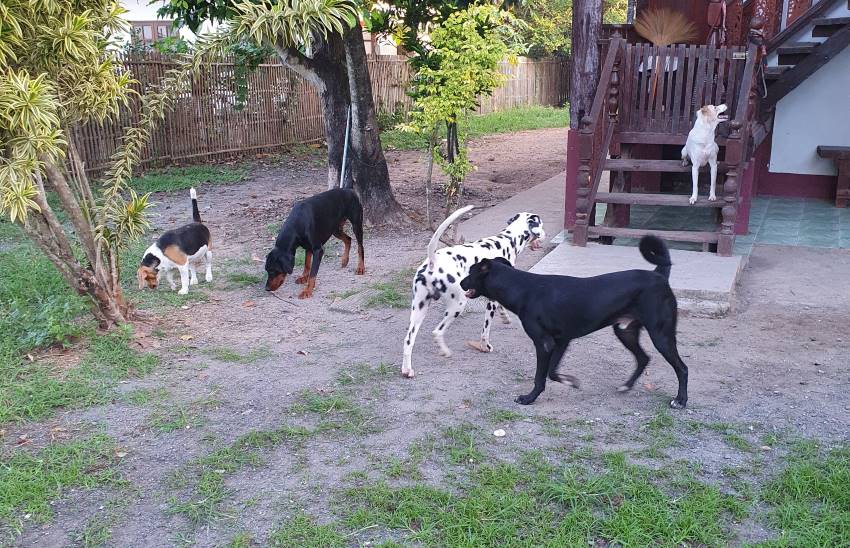
Social Learning and Behavioral Adaptation
How Dogs Learn and Match Human Preferences in Social Tasks
Dogs possess an extraordinary ability to learn and align with human preferences, making them adept at negotiating human-centric social tasks. This ability stems from their long history of domestication, where those individuals who could best cooperate with humans had a selective advantage. Consequently, dogs have evolved to be highly sensitive to human social cues, enabling them to follow complex commands, recognize subtle gestures, and fulfill expectations within a social framework.
One way dogs learn human preferences is through associative learning, where they form connections between actions and outcomes. For example, a dog can learn that sitting calmly when a guest arrives leads to positive reinforcement, such as treats or praise, ultimately matching the human’s preferred behavior. Observational learning also plays a critical role; dogs observe humans and other dogs and mimic successful behaviors to achieve similar rewards.
Adaptation Mechanisms in New Environments
Dogs’ capacity to adapt to new environments is another testament to their social intelligence. When introduced to an unfamiliar setting, dogs employ several mechanisms to acclimate and integrate smoothly.
Initially, observation helps dogs understand the new space and its inhabitants’ behavior patterns. By watching how people and other animals behave in a new setting, dogs can identify key social cues and appropriate responses. Additionally, dogs rely heavily on routine. Establishing a consistent routine in a new environment can significantly reduce a dog’s anxiety and facilitate smoother adaptation. Allowing dogs time and space to familiarize themselves gradually with a new environment also aids in reducing stress and promoting comfort.
Social referencing, where dogs look to humans for guidance in uncertain situations, is another adaptive strategy. For instance, if a dog is unsure about a novel object or a new individual, it might look at its owner for cues on how to react, aligning its behavior accordingly.
Importance of Social Cues in Behavioral Modification
Social cues play an indispensable role in dogs’ ability to modify their behavior. These cues can be verbal commands, body language, facial expressions, or even the tone of voice. Dogs are adept at interpreting these signals and adjusting their behavior to fit the social context.
For instance, a firm “no” accompanied by an authoritative expression can deter a dog from undesired behavior, whereas a warm smile and soft speech can encourage the dog to continue positive behavior. Dogs also recognize social cues from other dogs, which helps them navigate canine social structures. Observing another dog’s posture, tail position, and vocalizations offers valuable information on whether to approach, play, or assert dominance.
Beyond human interaction, understanding and responding to canine social cues is vital in group settings. This keen sensitivity ensures they can coexist peacefully and maintain hierarchy within a pack, whether in a domestic or wild context. Misinterpretation of social signals can lead to conflicts or anxiety, underscoring the importance of this aspect of social learning.
Concluding Transition
Understanding these facets of canine social learning and behavioral adaptation allows us to appreciate the depth of their social intelligence. As we delve further into our exploration, recognizing the importance of these adaptive strategies in both domestic and social groups becomes crucial for facilitating smoother transitions and fostering harmonious relationships.
Group Integration Processes
The integration of dogs into new social groups is a fascinating process underpinned by their extraordinary social intelligence and flexibility. This chapter delves into the complexities of how dogs successfully adapt and integrate into new social groups, exploring behavioral changes during the adaptation period and the factors influencing successful group transitions.
Patterns of Successful Integration Into New Social Groups
When a dog enters a new social group, the journey to integration begins immediately. Successful integration generally follows recognizable patterns that involve exploration, interaction, and the establishment of social roles.
- Exploration: Upon entering a new environment, dogs initially explore their surroundings and the members of the group. This phase is marked by cautious investigation where the dog gathers information about the group’s dynamics, hierarchies, and individual personalities.
- Interaction: After the exploratory phase, dogs start interacting with other members of the group. These interactions range from playful engagements to submissive behaviors. Play not only serves as a social icebreaker but also helps the dog learn about the social rules and expectations within the group.
- Role Establishment: Over time, dogs find their place within the social hierarchy. They might test boundaries and challenge others to understand where they fit in the group. Their role can vary based on their personality, past experiences, and the existing dynamics of the group.
Understanding these patterns is crucial for pet owners and researchers as they provide insights into how to facilitate smoother integrations.
Behavioral Changes During the Adaptation Period
During the adaptation period, dogs often exhibit a range of behavioral changes. These changes can be seen as mechanisms that help them negotiate their new social environments and can be categorized into three main areas:
- Behavioral Flexibility: Dogs exhibit a remarkable degree of behavioral flexibility during this period. They may alter their typical behavior to match the prevailing norms of the group. For instance, a dominant dog might display more submissive behaviors to avoid conflicts initially.
- Stress Responses: As with any significant change, integration into a new group can be stressful. Common stress responses include changes in eating habits, increased vigilance, and altered sleep patterns. These are normal as the dog navigates the uncertainties of the new environment.
- Social Assertion and Withdrawal: Dogs may oscillate between asserting themselves and retracting socially. This fluctuation helps them gauge how much assertiveness is acceptable and when withdrawal is necessary to avoid confrontations.
Factors Affecting Successful Group Transitions
Several factors influence how smoothly dogs transition into new social groups. These factors can significantly affect the speed and ease with which a dog integrates into a new setting.
- Previous Socialization: Dogs with extensive socialization experiences are typically quicker to adapt to new groups. They have already learned a broader spectrum of social signals and appropriate responses, making them more adept in new social contexts.
- Individual Temperament: The personality of a dog plays a crucial role. More adaptable and easy-going dogs generally integrate more seamlessly than those who are more dominant or fearful. Understanding and acknowledging a dog’s temperament can help in creating strategies for smoother integration.
- Consistent Routines and Rituals: Consistency in routines and rituals, such as feeding times and play schedules, provides a sense of security and stability. This can significantly reduce stress and help the dog feel more at ease in the new group.
- Human Facilitation: Human intervention can also be a critical factor in successful integration. Active involvement in monitoring interactions, mediating conflicts, and providing positive reinforcement for appropriate behaviors can expedite the integration process.
Recognizing and understanding the factors that affect successful integration is essential for fostering harmonious relationships within multi-dog households or groups. By paying close attention to these aspects, pet owners and caretakers can better support dogs as they navigate and settle into their new social environments.
This understanding sets the stage for a deeper exploration of the role of emotional intelligence in canine social interactions, which further illuminates how dogs achieve not just integration, but thriving social bonds and emotional connections within their groups.
Emotional Intelligence in Social Interactions
Dogs are known for their exceptional emotional intelligence, which allows them to thrive in diverse social environments. This chapter examines how dogs recognize and respond to emotions in both humans and other dogs, the role of emotional communication in social bonding, and the balance between emotional well-being and social hierarchy.
Recognition and Response to Emotions
One of the remarkable aspects of canine behavior is their ability to recognize and respond to the emotions of humans and fellow dogs. Dogs use a plethora of sensory cues—visual, auditory, and olfactory—to gauge emotional states. Research has highlighted that dogs can differentiate between happy and angry human facial expressions, showcasing their attunement to human emotional cues.
Dogs’ ears and tail movements, vocalizations, and even the position of their body convey important emotional information. For instance, a dog with a relaxed body and wagging tail typically signals friendliness, whereas a dog with a lowered head and tucked tail might indicate fear or submission. These subtle cues are integral to dogs’ social interactions and help them navigate complex social landscapes effectively.
Role of Emotional Communication in Social Bonding
Emotional communication plays a pivotal role in fostering social bonds among dogs and between dogs and humans. Through consistent positive interactions, dogs form strong attachments with their human caregivers. Activities like petting, playing, and training sessions enhance the emotional connection, with oxytocin—often termed the “love hormone”—playing a significant role in reinforcing these bonds.
Dogs also use emotional communication to bond with other dogs. Play behavior, characterized by actions such as play-bows, is instrumental in establishing and maintaining friendly relationships among dogs. These interactions are not only about fun but also about building trust and cooperation within social groups.
Balance between Emotional Well-Being and Social Hierarchy
Maintaining a balance between emotional well-being and social hierarchy is crucial for dogs, particularly those living in multi-dog households or social settings. While establishing a social hierarchy is natural for dogs, it is essential that this hierarchy does not compromise their emotional health. Pet owners and handlers must ensure that all dogs feel secure and valued, irrespective of their position in the social order.
Strategies such as providing adequate resources, ensuring equal attention, and facilitating positive interactions can help maintain this balance. Observing and understanding individual dogs’ emotional needs are key to promoting a harmonious social environment.
Understanding and supporting dogs’ emotional intelligence enriches their social interactions, enhancing their ability to integrate smoothly into various social groups. This intricate interplay of emotional recognition, communication, and balance underlies the nuanced social dynamics that define canine relationships.
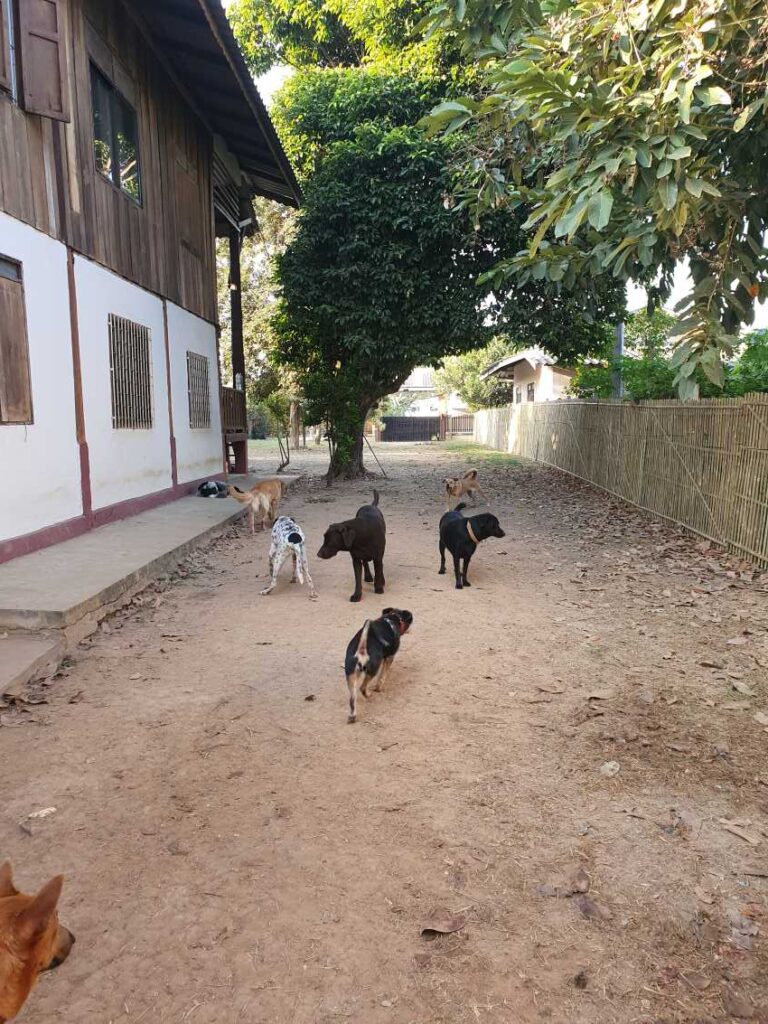
Structured Social Behaviors
Distinction Between Play Behavior and Purposeful Social Interactions
Dogs exhibit a variety of social behaviors that serve distinct purposes. Understanding the difference between play behavior and purposeful social interactions is crucial in comprehending canine social dynamics. Play behaviors in dogs are characterized by actions such as chasing, wrestling, and play-bowing. These activities often involve exaggerated movements and non-threatening expressions, signaling to other dogs that the behavior is meant to be playful rather than aggressive. Play is essential for social bonding, physical exercise, and cognitive development.
On the other hand, purposeful social interactions are structured and goal-oriented. These interactions might involve behaviors such as establishing dominance, seeking attention, or performing tasks. For example, a dog might nudge its owner to convey a need, such as going outside or requesting food. Purposeful interactions are often more subdued and deliberate compared to the exuberance seen in play.
Cognitive Aspects of Social Learning and Memory
The cognitive abilities of dogs play a significant role in their social learning and memory. Dogs are adept at learning through both observation and direct experience. For instance, they can watch other dogs or humans perform a task and then imitate that behavior. This observational learning is crucial in social contexts, as it allows dogs to integrate effectively into various social settings by mimicking established social norms.
Moreover, dogs demonstrate remarkable memory capabilities that aid in social interactions. They can remember individuals—both humans and other dogs—and their past interactions, which influences their future behavior. This memory helps build trust and understanding, making subsequent interactions smoother and more predictable.
Dogs also exhibit context-specific memory, where they can associate certain behaviors with specific environments or situations. For example, a dog might know that it is expected to sit quietly in the living room but can play freely in the backyard. This cognitive flexibility enables dogs to adapt their behavior based on the context, ensuring appropriate social conduct.
Functional Purposes Served by Different Social Behaviors
Different social behaviors in dogs serve various functional purposes that are vital for their well-being and survival.
- Communication: Many social behaviors in dogs are geared towards communication. Barking, growling, and body postures convey messages to other dogs and humans. Understanding these cues is essential for preventing conflicts and fostering cooperative relationships.
- Social Bonding: Activities such as grooming, playing, and resting together strengthen the bonds between dogs. These behaviors promote group cohesion and emotional support, which are important for social animals living in packs or family units.
- Resource Management: Hierarchical behaviors help manage access to resources such as food, resting spots, and attention from humans. Displaying dominant or submissive behaviors reduces the likelihood of conflicts over these limited resources.
- Training and Task Performance: Dogs learn specific behaviors through social learning that are essential for working roles such as herding, hunting, or assisting individuals with disabilities. These learned behaviors are often practical and goal-oriented, showcasing the purposeful side of canine social interactions.
By observing and understanding these structured social behaviors, we gain insight into the complex social world of dogs. This knowledge helps in managing their behavior, ensuring their well-being, and enhancing the bond between humans and their canine companions.
Dogs as Flexible Social Beings

Dogs are renowned for their remarkable social flexibility, a trait that has been honed through centuries of evolution and domestication. This adaptability is not just a survival mechanism but a testament to their sophisticated social intelligence. As flexible social beings, dogs can seamlessly integrate into various social environments, whether it be a bustling family home or a quiet single-person household. Their ability to read and respond to social cues allows them to adjust their behavior according to the dynamics of their surroundings, making them exceptional companions.
The psychology behind dogs as flexible social beings lies in their capacity for social learning and emotional intelligence. Dogs are adept at observing human behaviors and mimicking actions that result in positive outcomes.
This learning process enables them to align with human preferences and expectations, fostering harmonious relationships. Moreover, their emotional intelligence allows them to perceive and react to human emotions, further enhancing their ability to adapt to different social settings. This combination of social learning and emotional acuity underscores the unique position dogs hold as adaptable and socially intelligent animals.
Furthermore, the evolutionary advantages of being flexible social beings have played a crucial role in the domestication of dogs. By exhibiting social plasticity, early dogs were more likely to be accepted by human communities, ensuring their survival and reproductive success. This adaptability has continued to benefit modern dogs, allowing them to thrive in diverse environments and form strong bonds with humans. As we continue to explore the intricacies of canine behavior, understanding the psychological underpinnings of their social flexibility provides valuable insights into their enduring relationship with humans.
As we continue to explore the intricacies of canine behavior, recognizing the well-defined social frameworks and their functional purposes allows us to foster deeper connections with our dogs. This understanding serves as a foundation for our ongoing exploration of canine social structures and behaviors.


